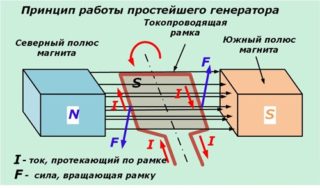An electric generator is a device designed to generate electricity for specific purposes. A homemade device is capable of performing the function of a source only if certain conditions are met. It will hardly be possible to assemble it completely "from scratch" at home. The only way to make an electric generator with your own hands is to use other mechanisms that work on the same principle for these purposes. An old engine from a walk-behind tractor or a wind turbine is most suitable. Assembly work will require a lot of effort and money, as well as the presence of some experience. If there is no complete confidence in success, it is best to purchase a branded product, though expensive, but effectively working.
Device and principle of operation
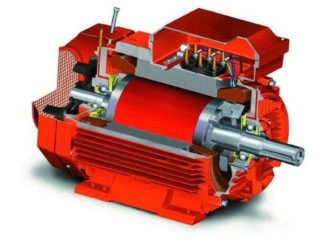
Before making an electric generator with your own hands in a purely home environment, you will need to familiarize yourself with its design and figure out how it works. The basis of such a device is a multi-section winding located on a stationary stator. A movable armature (rotor) is placed inside, in the design of which a permanent magnet is provided. This part of the generator, through a special drive mechanism, is connected to a propeller driven by a wind turbine or gasoline engine. Alternative energy resources can be used as a drive (water or heat generated by burning wood, for example).
- when the rotor rotates, its magnetic lines cross the e / m field of the stator coils;
- due to this, according to Faraday's law of induction, an EMF of the corresponding magnitude is induced in them;
- a load is connected to the stator coils, the alternating current in which changes in a sinusoidal manner.
Depending on the number of stator windings and the switching circuit, you can get a single-phase 220 Volt or a three-phase (380 Volt) home-made generator.
This principle of operation applies to all samples of electrical machines, without exception (regardless of the type of drive).
An efficiently working electric current generator, made by hand from auxiliary parts, is able to solve a number of everyday problems. Homemade products are traditionally used to generate enough electrical energy to power a household's electrical grid. In addition, not very powerful welding equipment or a water pump for watering the beds in the country can work from the unit. The product made in the form of a wind generator is allowed to be operated in the country and on a hike.
DIY generator assembly
Instructions for assembling current generators with your own hands involves performing work in several stages. They begin with the preparatory stage, at which it is necessary to stock up on initial blanks and the required material.
Preparatory stage
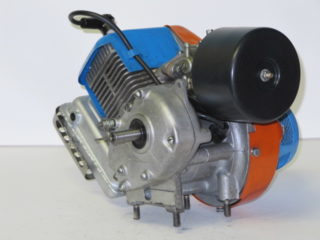
For assembly you will need:
- An old electric motor from a walk-behind tractor or wind turbine with a working stator winding. There are also popular options for using motors from an old washing machine or water pump.
- To equalize the output current, it is advisable to make a rectifier (converter) in advance.
- To facilitate the launch of the future device and self-excitation of its 220 volt windings, a high-voltage (at least 400-500 volts) capacitor with a capacity of 3-7 microfarads will be required.Its exact value is selected depending on the planned power of the generator.
Assembly will require long pieces of securely insulated wire, adhesive protective tape, and an assembly tool (diagonal cutters, pliers, and a set of screwdrivers). You should also stock up on a powerful soldering iron necessary to restore contacts in broken windings of an old motor.
You should worry in advance about the grounding of the case of the future product, which generates a voltage that is dangerous for humans.
Upon completion of the preparation, they proceed to the assembly, the order of which depends on the selected source sample.
Wind turbine - the simplest option
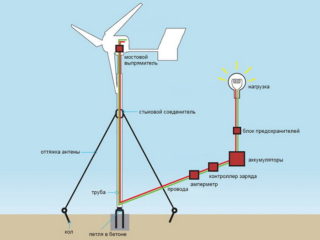
The easiest method to implement is to manufacture a wind generator assembled from scrap parts and ready-made modules. Very simple electrical loads can work from it, the power of which does not exceed 100 watts (a light bulb, for example). To make it you will need:
- (it will work as a generator).
- Bottom bracket and main sprocket from an adult bike.
- Roller chain from an old motorcycle.
- Bicycle frame.
A good master will probably find all these improvised blanks in the garage, from which an electric generator is easily assembled with his own hands.
To familiarize yourself with this procedure, it is advisable to watch a video that describes in detail the procedure for making a windmill.
An asterisk is installed on the shaft of such an electric motor, which, by means of a roller chain, is driven into rotation from home-made wind blades attached to a bicycle frame. With their help, the translational movement of the wind is converted into a rotational moment. This design is capable of generating a load current of up to 6 Amperes at a voltage of 14 Volts.
Power plant based on a generator from a walk-behind tractor
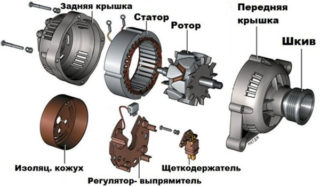
A more complex version involves the use of an old walk-behind tractor used as a drive. The generator function in this system is performed by an asynchronous motor with a rotational speed of up to 1600 rpm and an effective power of up to 15 kW. During the assembly process, its drive mechanism is connected to the axis of the walk-behind tractor by means of pulleys and a belt. The diameter of the pulleys is selected so that the rotational speed of the electric motor converted into a generator is 15% higher than the nameplate value.
Advantages and disadvantages
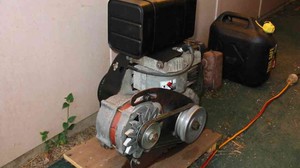
The advantages of a hand-assembled product include:
- The ability not to depend on interruptions in the operation of supply substations, receiving the necessary minimum of electricity on your own.
- The homemade generator is adjusted to the operating parameters corresponding to the specific requests of the user.
- Its manufacture instead of a purchased product will save significant amounts (especially in a situation with 380 volt asynchronous machines).
The disadvantages of self-production are the possible difficulties with the assembly of a specific type of product and the need to spend money on energy (fuel, for example).
Operating tips
Before you make a household electricity generator, you need to familiarize yourself with the rules for its operation. Their essence is as follows:
- Before starting the device, all loads are disconnected so that it runs idle.
- The presence of oil in the working compartment of the generator is checked - its level must be above the set mark;
- The device remains switched on for about 5 minutes, after which it is allowed to connect the load.
In accordance with the rules of operation and maintenance of such generators, the most suitable mode of operation is considered to be the use of its power at 70% of the limit value. If this requirement is met, the equipment will not overheat and can easily cope with the design load.

